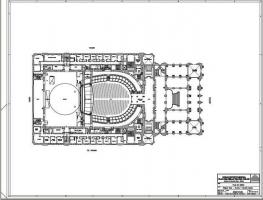Baroque architecture: characteristics and style
Baroque architecture developed between the end of the 16th century and the first half of the 18th century approximately. It arose in Italy and from there it spread throughout Europe. It also spread to Latin America through colonization.
Ornamental richness, monumentality, effectism, theatricality and spectacularity dominate in Baroque architecture. However, the baroque was not a unified style, but a trend that was interpreted in a particular way in each country and region.
That is why it is worth asking, what are the general characteristics of Baroque architecture? Who were its greatest exponents and works? What is the context of Baroque architecture and what was the role it played?
Characteristics of Baroque architecture
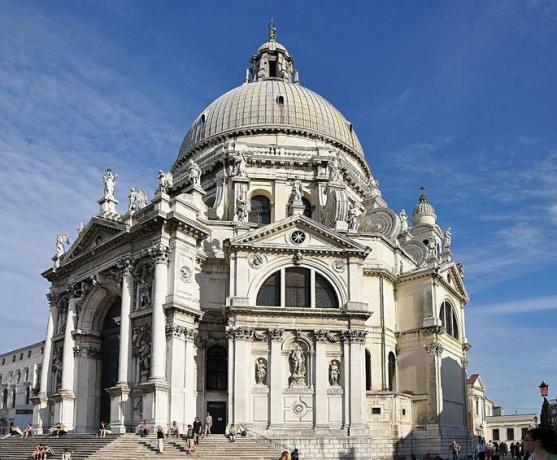
In a conference entitled The baroque and the marvelous real, Alejo Carpentier would affirm that the baroque is described as a style marked by:
... horror of the void, the bare surface, the geometric linear harmony, a style where around the central axis (...) they multiply what we could call the "proliferating nuclei", that is, decorative elements that completely fill the space occupied by the construction, the walls, the entire architecturally available space, with motifs that are endowed with their own expansion and launch, project the forms with an expansive force towards outside. In other words, it is an art in movement, an art of impulse ...
How are these characteristics expressed concretely?
Compositional dynamism and movement applied to architecture
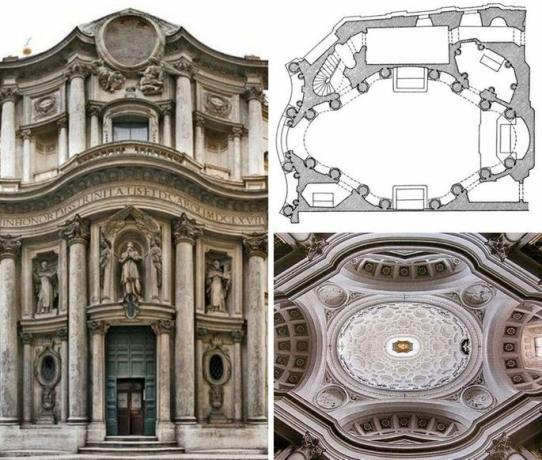
Baroque architecture aims to give its structures compositional dynamism, instead of the quiet Renaissance character. Movement will be one of your main searches. This will apply, for example, in the use of corrugations for interior walls and facades, as well as in the columns.
Polycentric architectural projection
Baroque buildings have different centers or construction axes according to the complexity of the design. Instead of being restricted to figures with a single central axis, such as the circle, square, and Greek cross, they create a polycentric effect through other figures or through new and daring combinations of figures mentioned.
Preference for curved line
Baroque architecture prefers the use of curved lines and undulating surfaces. In this sense, abandon straight lines and flat surfaces.
Preference for elliptical and mixtilinear plants
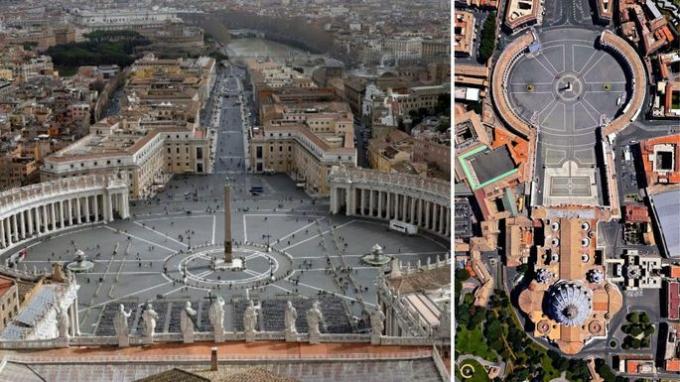
As a consequence of the above, in the baroque the use of elliptical plants is preferred, although also complex mixtilinear shapes, that is, that combine curved and straight lines. Forms of nature are also used for the projection of unusual plants.
Search for infinity
The purpose of the dynamism was to dilute the spatial limits and create an effect of continuity and infinity through the open form, which implies the smoothing of lines and segmented volumes. It was also intended to achieve this effect through decoration.
Ornamental wealth and integration of the arts
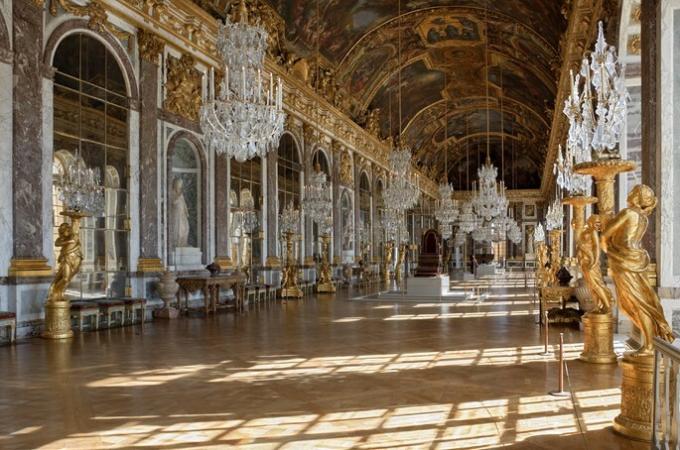
The baroque admitted the ornamental richness of great exuberance, a decoration that recharged the entire space. The architects used all the arts, integrating architecture, painting and sculpture into a complex whole. Mirror games and optical illusions (called trompe l'oeil) were also valid, the latter applied to walls, vaults and domes.
Use of light according to the intended effects
Instead of opting for diaphanous and natural light, Baroque architecture is characterized by creating atmospheric effects through the manipulation and regulation of light inputs. The search for the effects of chiaroscuro is a constant. Researcher Conti points out that this:
It is possible by contrasting pronounced projections, pronounced "flights" as the architects say with abrupt and wide entrances. It is also possible to "chop up" the surfaces, curling them in different ways.
It may interest you: Baroque: characteristics, authors and works.
New use of architectural orders

Baroque architects especially developed the Solomonic order, the colossal order, and the stipe-like columns, to which they eventually added orders in the oriental style.
The Solomonic order, inspired by the biblical description of the Temple of Solomon, it consists of a torso or twisted shaft, whose twist usually makes six turns. This turned column is often richly decorated with various motifs.
The Solomonic shaft is erected on a base and culminates in a capital. The latter is usually finished off with motifs taken from the well-known classical orders, especially the Tuscan and composite order.
The colossal or giant order It consists of colossal columns whose height extends over several levels or floors. Already in the Renaissance, projects were made with this type of columns (many were never built), but its use became widespread in the Baroque.
Stipe It is a word that designates the inverted truncated pyramidal columns, which are of Mycenaean origin. They were widely used in the baroque, especially in the Latin American baroque. They could be decorated with all kinds of plant, animal or anthropogenic forms.
Other frequent architectural elements:

- Oval, elliptical and double curved arches.
- Fins or fins: decorative element in the shape of a wing, used to hide the roofs or as a structural solution to medieval buttresses.
- Scrolls: spiral-shaped ornaments, used to finish off capitals, fins and other architectural elements.
- Newly designed pediments, with a preference for fragmented and / or curved ones.
- Oval, curved, mixed windows.
- Complex, twisted and majestic stairs.
- Niches and niches of frequent use.
- Introduction of decorated oculi on facades and ceilings.
- Evolution from the gallery to a reception room to house artistic collections.
Urban development
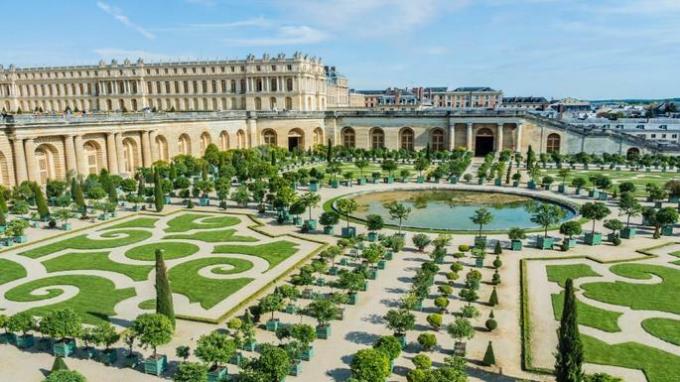
Baroque architecture also gave an important place to the development of urban complexes such as gardens, city areas or certain types of residences. They extensively developed round and elliptical avenues and squares, inscribed within a connected network. Also, there was often an overall relationship between the Baroque building and the surrounding space.
Most important architectural types
Within the variety of Baroque buildings, two architectural types stand out: palaces (citizens, royal or country) and churches (cathedrals, parochial or conventual). This goes hand in hand with the growth of absolutism, on the one hand, and the assertion of ecclesiastical power, on the other.
You may also like:
- Renaissance: most important features and works of art.
- Neoclassicism: Characteristics of Neoclassical Literature and Art.
Baroque architecture in Italy
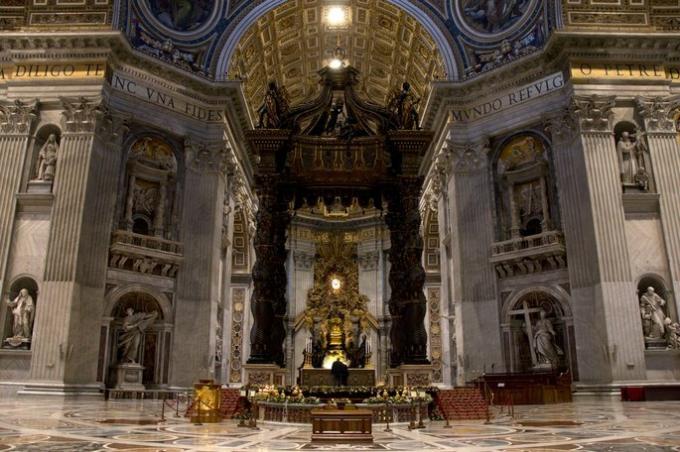
Italy was the origin and center of irradiation of the Baroque. It was especially relevant in terms of religious architecture, influenced by the need to reaffirm the Catholic Church in the face of the impact of the Protestant Reformation. Its architecture was characterized by the use of highly complex plants and walls. Also, according to the researcher Conti, Italy gave great exuberance in proportions to the architectural elements of the Renaissance, such as the dome and the columns. The following periodization is recognized:
- Early Baroque: takes place between 1584 and 1625. It covers the first manifestations of the baroque spirit, so that some aspects of Renaissance architecture can still be registered.
- High baroque: takes place between 1625 and 1675. It is the period of consolidation of the baroque, where the style defines its true identity. Among its top representatives are Bernini and Borromini.
- Late Baroque: period from 1667 to 1750. It coincides with the expansion of the Baroque to America and with the progressive decline of the influence of the papacy after the death of Pope Alexander VII.
Italian Baroque architects and most important works
- Carlo Maderno (1556 - 1629): he is considered the father of the Italian Baroque. The most emblematic works of him are: facade of the Basilica of San Pedro; facade of the church of Santa Susana and facade of San Andrés della Valle.
- Giacomo della Porta (c. 1540-1602): collaborator of Michelangelo, so that this artist left an important influence on his work. Likewise, he received classes from Jacopo Barozzi de Vignola. Among his best-known works are: the Gesù church and the dome of St. Peter's Basilica.
- Gian Lorenzo Bernini (1598 - 1680): Italian architect, sculptor and painter. Among his most emblematic architectural works are the baldachin of St. Peter's Basilica in Rome and St. Peter's Square in the Vatican.
- Francesco Borromini (1599-1667): his real name was Francesco Castelli. Among his works, the church of San Carlos de las Cuatro Fuentes stands out.
- Baltasar Longhena (1597-1682): Venetian architect and sculptor. Among his constructions are the Church of San Salvador and the Church of Santa María de la Salud, Venice.
Baroque architecture in France
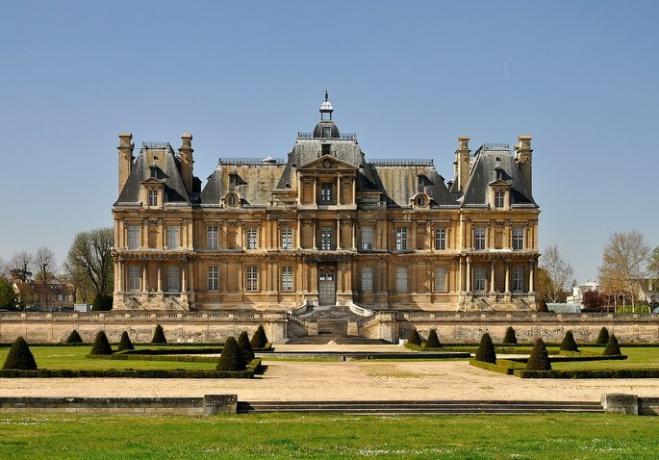
French Baroque architecture was the main propaganda instrument of the absolutist monarchs Louis XIII, Louis XIV and Louis XV. The French excelled in palatial and urban architecture, ready to serve the French absolutist power. In addition to serving the political cause, this style was applied by the upper bourgeoisie in hotel and housing construction.
The French Baroque was more classical and restrained than the Italian when it came to exteriors. Its facades were more severe, its plants less complex and the proportions more restrained. They sought to eliminate "Italian arbitrariness" and pursued more delicate purposes. However, the interiors contrast with the facades due to the extreme ornamental richness.
French Baroque architects and most important works
- Salomon de Brosse (1571-1626): one of his best-known works is the Luxembourg Palace, built between 1615 and 1620.
- François Mansart (1598-1666): his best-known work is the Maisons-Laffitte palace, built between 1630 and 1651.
- Jules Hardouin-Mansart (1646 - 1708): carried out important and memorable works such as the Orangerie and the Grand Trianon (included in the Palace of Versailles complex).
- Louis Le Vau (1612 - 1670): was the architect of King Louis XIII. Among his greatest works are the Palace of Vaux-le-Vicomte and the extensions of the Palace of Versailles.
- Robert de Cotte (1656 - 1735): responsible for the completion of the chapel of the Palace of Versailles and the construction of the Rohan Palace.
- Ange-Jacques Gabriel (1698 - 1782): widely known for the Château de Menars, the Place de la Concorde and the Palais de Compiègne. He was the last architect of Versailles.
Baroque architecture in Spain
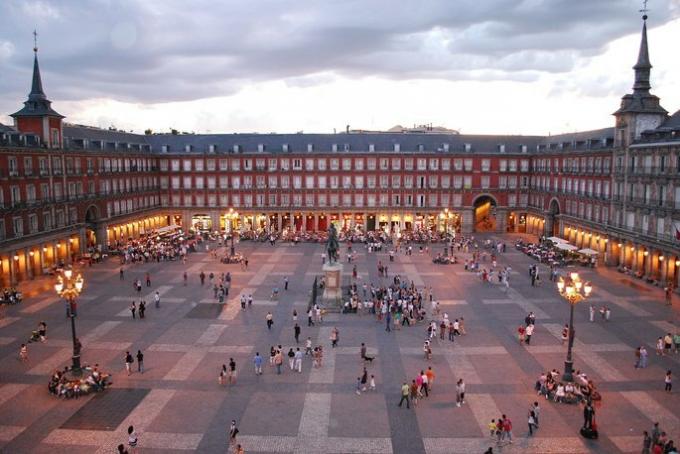
In general terms, four styles can be referred to in Spanish Baroque architecture:
- First baroque: covers from the end of the 16th century to a good part of the 17th century. He drank from the inspiration of the style of Juan Herrera, and was characterized by his austerity, which at times gave a gloomy image, far removed from the vivacity of the Italian baroque.
- Second baroque: it is characterized by gradually opening the way to more ornamentation.
- Churrigueresque style: fully in force in the 18th century, it was characterized by the decorative exuberance driven by the style of the Churriguera brothers.
- Bornonic style: preferred by the Bourbon dynasty, which opted for a French style, with academic and classicist features opposed to the Churrigueresque. It was also characterized by the wide spaces and the serene and orderly rhythm.
Architects of the Spanish Baroque and most important works

- Juan Gómez de Mora (1586 - 1648): inscribed in the first Spanish Baroque. Some of his best known works are the Plaza Mayor, the Town Hall and the College of the Jesuits in Salamanca.
- Alonso Cano Almansa (1601 - 1667): inscribed in the second Spanish Baroque. He is known for the facade of the Granada Cathedral.
- Felipe Sánchez (? - 1712): also inscribed in the second Spanish Baroque, author of the project for the basilica of El Pilar in Zaragoza.
- José Benito Churriguera (1665-1725): known for the church of San Cayetano in Madrid and the Goyeneche palace, completed by his brother Alberto.
- Joaquín Churriguera (1674-1724): stood out for the Colegio de Calatrava in Salamanca.
- Alberto Churriguera (1676-1750): author of Plaza Mayor de Salamanca.
- Teodoro Ardemáns (1661-1726): from the Bourbon period, author of the Real Colegiata de la Granja de San Ildefonso.
- Santiago Bonavía (1695 - 1759): his works include the Palace of Aranjuez and the Basilica of San Miguel.
- Ventura Rodríguez (1717-1785): known for the dome of the chapel of the Palace of Infante don Luis (Boadilla del Monte), and the monastery of Santo Domingo de Silos (Burgos).
Baroque architecture in Latin America

José Lezama Lima says that the Latin American Baroque is characterized by “plutonism”, that is, an “original fire that breaks up the fragments and unifies them”. For him, the Latin American baroque is the conjunction of the different juxtaposed cultures that form an aesthetic in permanent tension but with full meaning.
Latin American Baroque architecture welcomed a good part of the Spanish aesthetics, by making use of elements such as the Solomonic columns and stipes. But it also made use of local indigenous elements, which explains its great diversity. Both its facades and interior spaces were lavishly decorated, displaying an authentic horror vacui. Let's get to know some examples of Latin American Baroque architecture.
Baroque architecture in Mexico
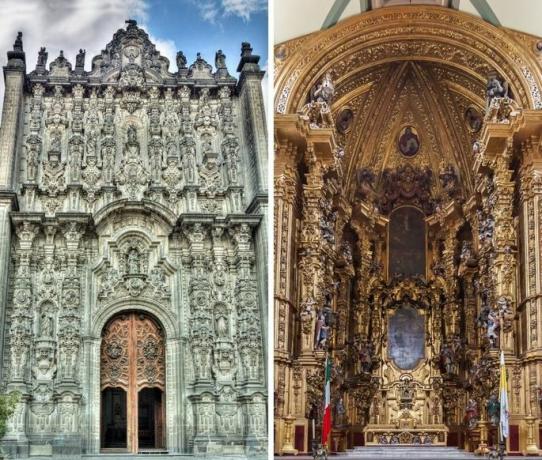
In the baroque architecture of Mexico we can mention as an example the Metropolitan Cathedral of Mexico City. This cathedral featured the work of many architects throughout the centuries. In the 18th century, fully baroque, the contributions of the architects stood out:
- Jerónimo de Balbás (1673 - 1748): introduced the stipe style. He designed and built the altarpiece of the kings of the cathedral.
- Lorenzo Rodríguez (1704 - 1774): carried out the design and execution of the Tabernacle of the cathedral.
Another noteworthy example is the church of San Francisco Javier in Tepotzotlán, state of Mexico, today part of the National Museum of the Viceroyalty. The architects and artists participated in the construction:
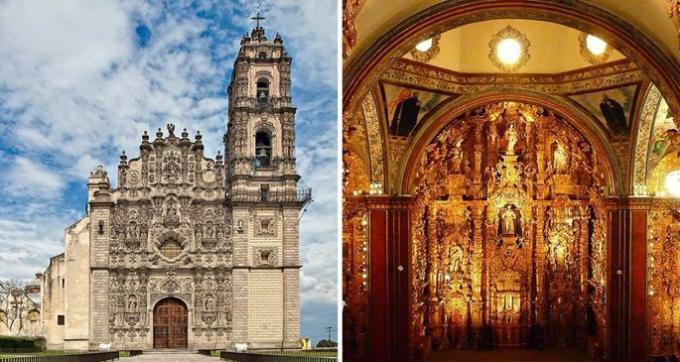
- Diego de la Sierra (1656- c. 1711): in addition to collaborating in the Francisco Javier de Tepotzotlán church, he also executed the north portal of the cathedral and the cloister of the San Pedro hospital, both constructions in Puebla.
- José Durán (1652 - 17th century): maker of the church's vault. He also started the project for the Basilica of Our Lady of Guadalupe.
- Ildefonso de Iniesta Bejarano y Durán (1716 - 1781): responsible for the facade and tower of the Francisco Javier church. He also built the Iglesia de la Santísima and the Aqueduct de los Remedios.
Baroque architecture in Peru

In the Baroque architecture of Peru we point out as an example the Cathedral of Cuzco, also known as the Basilica of the Virgin of the Assumption. As architects participated:
- Juan Miguel de Veramendi (? - 1573): developed the initial plan and started the work, but could not continue due to legal problems.
- Juan Correa (16th century).
- Miguel Gutiérrez Sencio (17th century): he was responsible for the layout and the walls of the basilica.
Baroque architecture in Ecuador

In the baroque architecture of Ecuador we can mention as an example the Church of the Company, in Quito, made from the plans brought from Rome.
Several architects and builders participated in it. Among them were Martín de Azpitarte, Gil de Madrigal and Marcos Guerra, among others.
Context and function of Baroque architecture
The baroque is framed at the same time the end of one era and the birth of another. It responded, in fact, to a time in crisis, precipitated by the confrontation between scientific advances, the Reformation and the Counter-Reformation, the wars of religion, the growth of absolutism, Western expansion and the colonization of America.
Baroque architecture became a propagant arm of the Church, on the one hand, and of the power of the absolutist kings on the other. For this reason, the baroque was the expression of the power conquered by the elite groups of those increasingly complex societies, including even the wealthiest bourgeois sectors.
During the Enlightenment, in the second half of the 18th century, the Baroque began to be observed with distrust, since its Decorative "excesses" were associated with everything that the Enlightenment questioned, such as political absolutism and fanaticism. religious.
Hence, the old Portuguese word "baroque", which designated an irregular and flamboyant type of pearl, was used to pejoratively describe this style. In response to the exuberance and drama of the Baroque, the Enlightenment responded with the neoclassical aesthetic, more austere and rationalist. Only from the 19th century on, the Baroque was once again looked at with the appreciation it deserves.
References
Carpentier, Alejo: The baroque and the marvelous real. Conference given at the Caracas Athenaeum on May 22, 1975.
Conti, Flavio: How to recognize baroque art. Barcelona: Editorial Médica y Técnica, 1980.
Lezama Lima, José: The American expression, in The kingdom of the image, Editorial Biblioteca Ayacucho, Caracas, 1981.
Biographical Dictionary of the Royal Academy of History, online.

